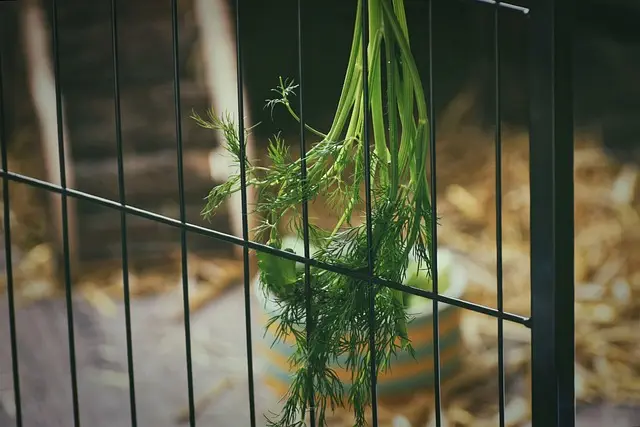2023 has seen Kratom's legal status in Indiana remain ambiguous at the state level, resulting in a mosaic of local regulations that vary by county and municipality. This lack of explicit state legislation on kratom in Indiana necessitates vigilance among consumers and vendors as legal landscapes can shift rapidly with new ordinances or legislation. It's important for individuals to stay informed about both state statutes and local regulations concerning Kratom, given the diversity of laws across Indiana's jurisdictions. The article emphasizes the necessity of up-to-date knowledge on Kratom-related policies in Indiana to ensure compliance with current legislation. Kratom, a plant historically used in Vietnam for medicinal purposes and scientifically known as Mitragyna speciosa, has a cultural significance deeply rooted in Vietnamese heritage. Its analgesic and stimulant properties have been recognized in folk medicine, and its cultivation in Vietnam involves careful selection and processing of leaves to maintain their alkaloid profile. The global interest in kratom's health benefits, including its presence in Indiana's market, underscores the importance of understanding both its cultural origins and the regulatory framework governing its use. The trade of kratom powder from Vietnam to Indiana highlights the complexities of international commerce and the critical role of consumer protection measures within the state's regulatory environment.
discover the intricate relationship between Vietnam’s kratom leaves and their emergence in Indiana markets. This article delves into the legal standing of kratom in Indiana, tracing its regulatory journey. We’ll explore kratom’s cultural roots within Vietnam, shedding light on its historical significance. Additionally, we’ll follow the path from the dense Vietnamese forests to the shelves of Indiana, detailing the meticulous harvesting and processing methods that bring this unique botanical to consumers. Understanding kratom in Indiana requires a comprehensive look at its global origins and local availability.
- Unraveling the Legal Status of Kratom in Indiana: A Comprehensive Overview
- Exploring the Origins and Cultural Significance of Vietnam's Kratom Leaves
- Harvesting and Processing: The Journey from Vietnamese Forests to Indiana Markets
Unraveling the Legal Status of Kratom in Indiana: A Comprehensive Overview

In the United States, the legal status of Kratom varies by state, and this is particularly true in Indiana. As of my knowledge cutoff date in early 2023, Kratom’s legality in Indiana is subject to a complex interplay of state laws and local ordinances. The Indiana State Legislature has not explicitly scheduled Kratom at the state level, leaving its legal status somewhat ambiguous. This means that within Indiana’s boundaries, the regulation of Kratom falls primarily under the purview of county and municipal governments. Consequently, the sale and use of Kratom can be legally permissible in one area but prohibited in another, often based on local interpretations of state laws and the specific regulations enacted by local authorities. It is imperative for consumers and vendors alike to stay informed about the most current legislation within their jurisdiction, as the legal landscape for Kratom in Indiana can change rapidly with new legislation or court rulings.
Navigating the legal status of Kratom in Indiana requires a nuanced understanding of both state statutes and local regulations. While the state has not enacted comprehensive statewide bans or legalizations, interested parties must keep abreast of evolving policies that could impact access to Kratom products. The absence of clear-cut state directives necessitates vigilance at the county and city levels, where local governments may have passed their own ordinances. For those in Indiana seeking to understand or comply with Kratom laws, it is advisable to consult both state and local statutes, as well as stay updated on any legislative changes that may occur. This diligence ensures that individuals are not unwittingly violating Kratom-related regulations within their specific area of residence or business operations.
Exploring the Origins and Cultural Significance of Vietnam's Kratom Leaves

In the rich tapestry of Vietnamese botanical heritage, Kratom leaves have carved out a niche of intrigue and historical significance. Originating from the Southeast Asian region, where Vietnam is situated, Kratom (Mitragyna speciosa) has been traditionally utilized for its medicinal properties within local communities. The tree itself, a member of the coffee family, thrives in the humid and fertile conditions prevalent throughout Vietnam’s diverse landscapes. While its use has extended globally, with discussions around Kratom in Indiana reflecting its availability and interest in its effects within American contexts, the cultural significance of Kratom leaves in Vietnam runs deep, often woven into local folklore and healing practices. Historically, Vietnamese folk medicine has employed Kratom for its analgesic and stimulant qualities, demonstrating a symbiotic relationship between humans and this natural resource. Today, the global spotlight on Kratom’s alkaloids and their potential benefits continues to fuel research and debate, with the Vietnamese origins of the plant playing a pivotal role in the ongoing narrative surrounding its use and regulation. As Kratom’s presence is increasingly recognized in regions like Indiana, where regulations vary, it is essential to appreciate the botanical heritage that informs its cultural and medicinal journey. Understanding the origins and cultural significance of Vietnam’s Kratom leaves provides a context for the discussions surrounding its use today, including the considerations and implications for those exploring its potential in different parts of the world such as Indiana.
Harvesting and Processing: The Journey from Vietnamese Forests to Indiana Markets

In the verdant forests of Vietnam, the meticulous process of harvesting kratom leaves begins at the first light of dawn. Local farmers, well-versed in the art of cultivation, carefully select mature leaves from the Mitragyna speciosa trees, a species native to Southeast Asia. These leaves are then dried and cured under precise conditions to preserve their alkaloid content, a crucial step that affects the potency and quality of the kratom. The leaves are subsequently ground into a fine powder, a form that is easily transported and consumed. This powder makes its way across the globe, with a significant portion finding its way to markets within Indiana, USA. Here, adherence to strict regulatory standards ensures the safety and efficacy of the product for consumers seeking its benefits. The journey from the dense Vietnamese forests to the regulated markets in Indiana is a testament to the global reach of kratom trade and the stringent measures taken at each step to maintain quality control. Indiana’s kratom market has become a destination for those interested in this botanical substance, with consumers relying on its diverse strains to experience various effects, from energy and focus to relaxation and pain relief. The path from the forests of Vietnam to the baskets of Indiana retailers is one that underscores the complexities of international trade and the importance of regulatory frameworks in ensuring consumer safety.
In conclusion, the complex legal standing of kratom in Indiana, as detailed throughout this article, underscores the nuanced regulatory landscape that these Vietnam kratom leaves navigate upon reaching Indiana markets. The rich cultural significance and intricate harvesting and processing journey from Vietnamese forests to Indiana’s consumer base highlight the multifaceted nature of kratom’s presence in the United States. For those interested in the evolving legal status of kratom in Indiana, staying informed is key as regulations continue to develop. This comprehensive overview serves as a testament to the dynamic relationship between international plant sourcing and local regulatory responses.






